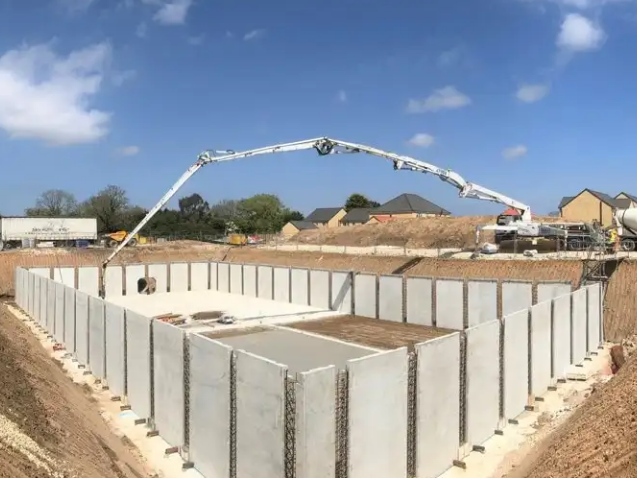What is Stormwater attenuation &how does it work?
There’s no address around it – the climate is taking a turn for the more regrettable. In later a long time extreme storms and flooding have gotten to be commonplace, and indeed in the event that they hadn’t, winter is fair around the corner – with floodwaters undermining potential long-term harm to buildings and infrastructure. So how can you secure yourself from the harm and chaos caused by the coming storms and the rising tide of floodwater?
The reply is Stormwater Weakening. But what does that mean?
Attenuation relates to the capacity of abundance stormwater amid the top of a storm, taken after by controlled discharge of the put-away water. The rate of discharge is outlined to be lower than the rate of runoff from a location earlier to advancement, successfully mirroring the common streams from the location.
Why attenuation is necessary
The development of difficult surfaces (rooftops, patios, carports, etc) on regions of arriving that were already undeveloped, changes the way water runs off the property. It evacuates characteristic soakage and vegetation that would have already moderated the runoff. The effect is that the volume of runoff increments and the stormwater organize (channels, channels, and streams) comes to capacity distant more regularly and much more rapidly.
The effects of increased runoff
This extra stream can have many impacts on the stormwater framework, including increased water levels causing surface streams and conceivable flooding potential for a few of this water to enter the wastewater framework and increment the hazard of sewage releases to the environment increased speeds within the streams causing disintegration to banks and natural damage increased push on the channeled organize driving to it coming up short prior, requiring expanded levels of support.
Types of Stormwater Attenuation Tanks & Equipment
Stormwater Weakening pivots on the capacity to trap and store floodwaters, at that point discharging them gradually into their normal waste pathways. In this manner, a great Stormwater Constriction framework must be able to do all three, and they accomplish this in different ways. A Lift raises or “elevates” the level of the ground and makes space underneath into which floodwaters can accumulate, with a tank that's measured and simple to construct in anything shapes are required. This tank can be up to 2.5m profound, and can effortlessly be gotten to and assessed by a proficient through a review well.
Stormwater Cartons work comparatively and are culminate for groundwater invasion. They permit up to 97% of their involved space to fill with water, so are a really compelling way to capture water, and can indeed withstand up to 80-ton vehicles stopping on best of them! They are a lower-capacity arrangement that's in any case fast and simple to set up, cheap, and essentially support free!
The other choice is to utilize Storm Water Weakening Tanks and Soakaway Cartons to capture water and store it somewhere else. Where the past two strategies of storm weakening basically caught water from their encompassing range, a partitioned tank has the capacity to capture water from a really wide region utilizing associated channels and collect it all together in one tremendous tank for dispersion.
How does it work?
A stormwater weakening tank is planned to gather and store abundance surface water run-off from a huge storm occasion. The water is at that point discharged from the capacity tank at a controlled rate, more often than not by a stream control, which implies that the surface water run-off will be moderated down some time recently being discharged into a neighborhood watercourse like a waterway or supply, limiting the hazard of restricted flooding. There is a bounty of diverse arrangements that are utilized to create stormwater constriction tanks. Huge breadth pipe frameworks, either plastic or steel, Pre-cast Concrete Box Culverts, concrete tanks, and plastic tanks, can all be utilized to make huge underground stormwater holding tanks.
Geocellular tanks, commonly known as cartons, are a prevalent choice for engineers and temporary workers since of their secluded nature, empowering them to fit into little spaces with the length, width, and profundity being planned to suit location particular imperatives in terms of space. They are too appropriate for heavy-duty stacking with negligible cover, meaning less soil needs to be unearthed compared to other frameworks. Their tall void ratio, ordinarily 95%+, implies that there's moreover exceptionally small space not utilized for stormwater holding capacity inside the uncovering, hence decreasing the amount of ruin from the uncovering that for the most part must be evacuated from location, which can be expensive.
In most advancements, the surface water seepage arrangement has got to be input right from the beginning, with the environmental organization being dependable for choosing at what rate (in liters per moment) the surface water can be discharged into the watercourse. Once this rate is confirmed, it is conceivable for the desired capacity volume to be calculated. Once the capacity volume is known, the architects can work out where on the location the tank can be found, at that point choose what arrangement fits best for the particular location needs in terms of stacking and measure, managed by the space accessible.


Comments
Post a Comment